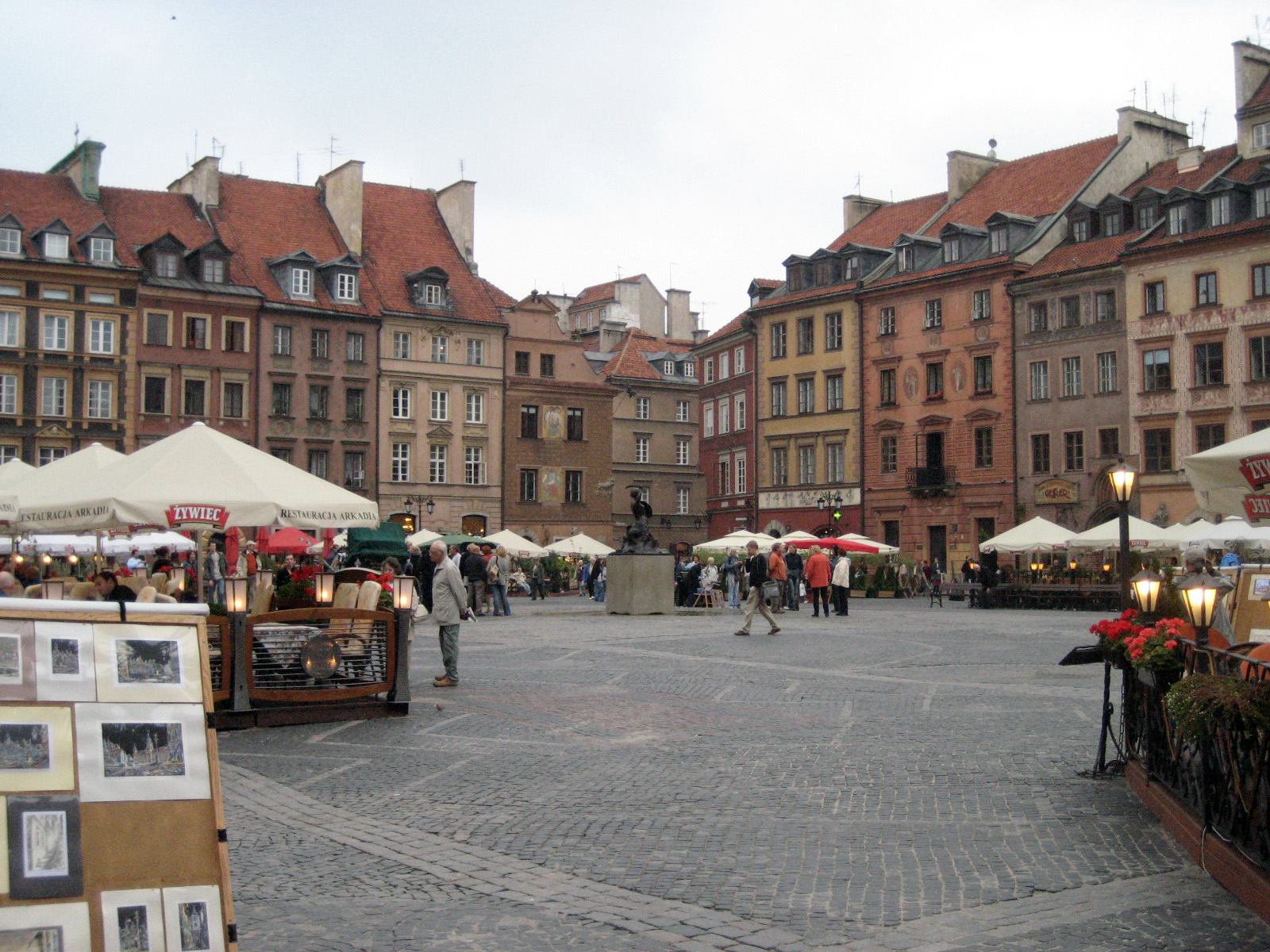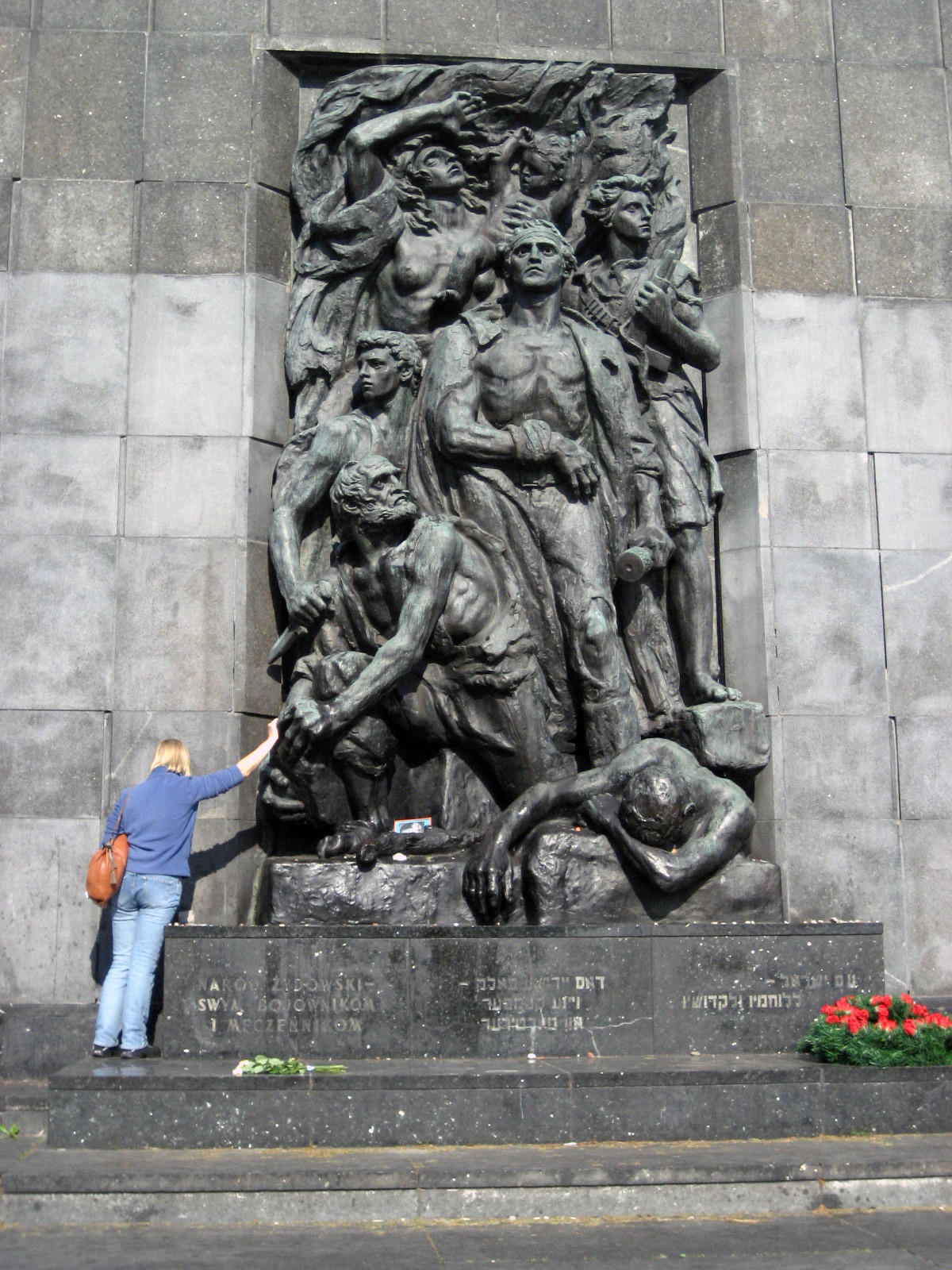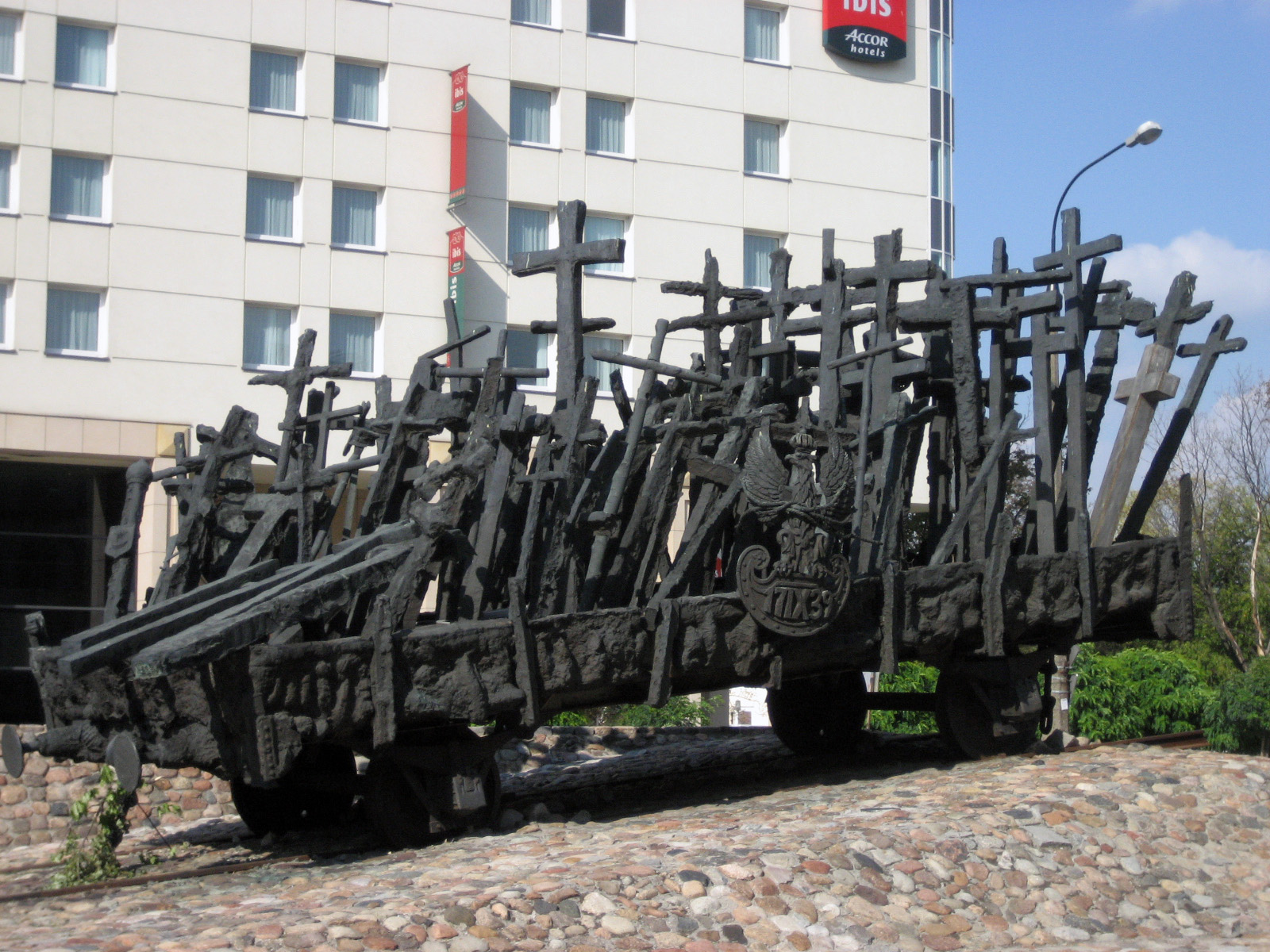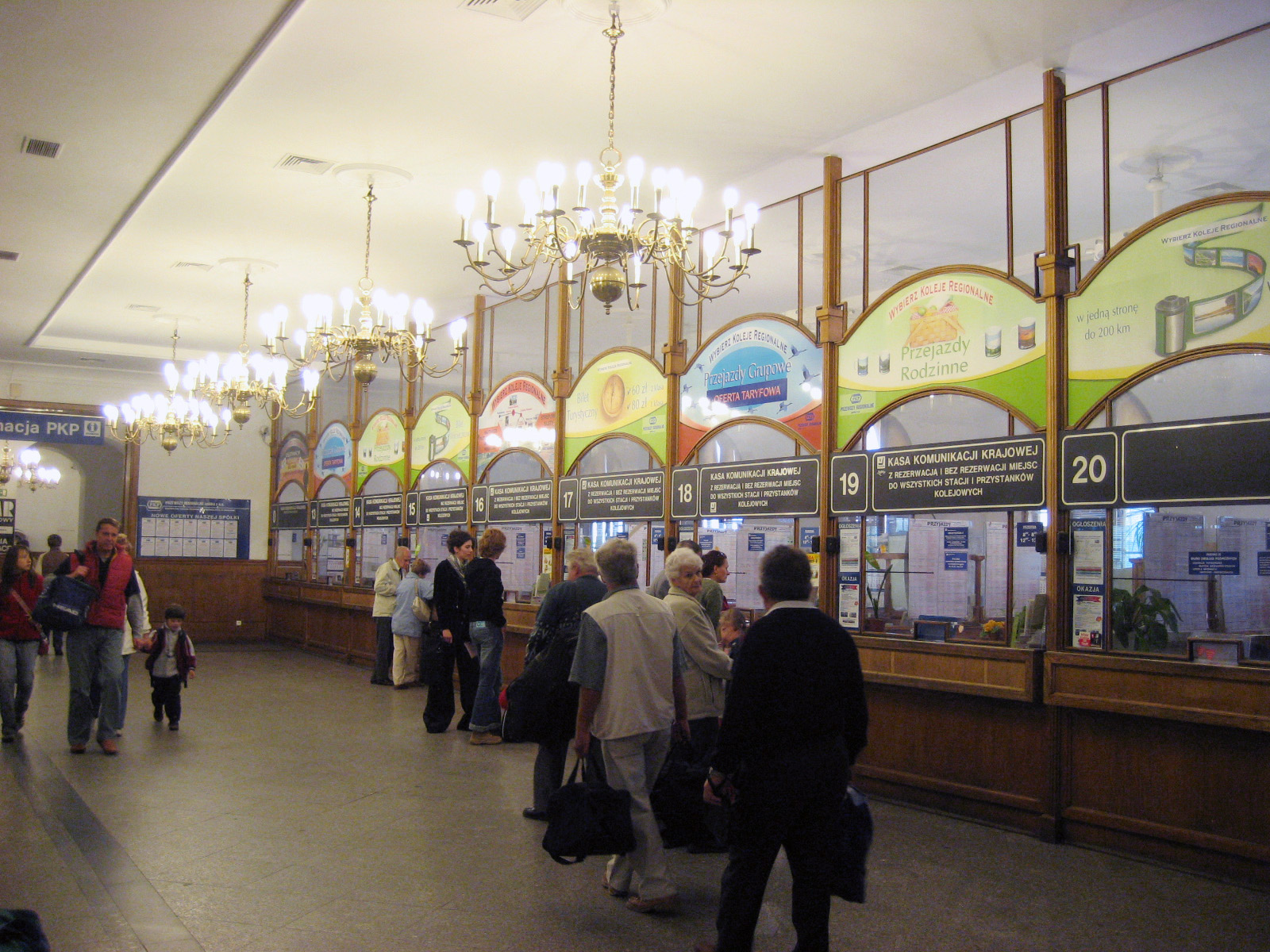We mostly used hand signals to purchase tickets from the Krakow train station to Warsaw. Raise the thumb for one ticket, thumb and forefinger for two tickets. When the woman asked what class we wanted I extended my forefinger, thinking it was 1st class. I was wrong. The thumb is first class. The forefinger is second class.
We’re sitting in the 2nd class cabin , six small seats, 2 overhead luggage racks and a door that can close for more privacy. Luckily no one wants the door closed. We are sharing the cabin with a small mustachioed man who reminds us of the Mayor of Munchkinland, but because of his very strange body odor, we refer to him as B.O. Plenski. He is traveling with his wife, a woman who could have been the model used for all those lipless folk art dolls we’ve seen in the marketplaces of Krakow.
They are taking their grand-daughter to Warsaw, a pretty 12 year old girl who eats sunflower seeds from a freshly harvested 2’ diameter sunflower head and sits quietly reading her polish book about the lives of Mary Kate and Ashley Olsen, the megawealthy, American teen twins who pop in and out of the scandal sheets every few months.
The 6th passenger in our crowded little cabin is a large donut of a man who looks like a charichature of a Bosnian thug. He pulls off his thick leather jacket and goes to sleep.
The price of 2 tickets from Krakow to Warsaw (about 300 kilometers) was about $40 (for both of them) First class tickets would have been a little more but we just couldn’t figure out how to get them, and so, for a little over 3 hours we sat with B.O. Plenski and his family watching farms and forests, forests and farms. Not even another town or train station. Poland is pretty empty once you get out of the cities.
At first glance, Warsaw is a big and gritty. Over 80% of the city was blown away during the war, and the Soviets rebuilt it with a neo-classical realist architectural style. The last 50 years of pollution have added a dark layer of gloom.
Our walk from the train station towards our hotel is literally dwarfed by the Jerozolimskie Boulevard, a street so big it could easily swallow up New York City’s 6th Avenue. It takes us 5 minutes just to walk through the underground passageway to get to the other side of the street. We can only imagine what Jerozolimskie looked like during a Soviet tank and rocket launcher parade.
Beneath Jerozolimskie Boulevard is network of Warsaw’s underground avenues. At first it appears to be an underground access to get across the street but it soon turns into a giant shopping mall that seems to go on forever. You can buy everything from food to clothing to guns and ammunition.
Our hotel is only 5 blocks from the train station, but 5 blocks in Warsaw is close to a 20 minute walk as we pass through years of soviet malaise, neglected churches, beautiful parks, vegetable stands, small shops and dogs with muzzles; we later found out there’s a law requiring all large dogs to wear a muzzle in public places. They range from shiek leather thong to cloth diaper to the Hannibal Lecter cage, They’re all pretty wierd, but then there’s no barking or biting.
The Rialto Hotel is 3 years old. The building, both inside and out, is a fabulous 19th century Art Deco reproduction. Paintings by Warsaw born Tamara de Lempicka grace the walls as if the building was designed to hold them. The hotel is an incredible architectural design and we’re delighted by every little nuance.
Arriving to a large city after an exhausting 3 hrs trip is pretty disorienting. It’s hard to see the beauty through the garbage, pollution and bad post war architecture. But everything always looks better after a good night’s sleep.
 First stop, as always, is the Old town, which in Warsaw is a bit off a misnomer. This section of the city was almost completely destroyed in 1944 after the Warsaw Uprising. Although the center of the Old Town looks charming and authentic, there are photos at every corner to remind you of what it looked like after the bombings.
First stop, as always, is the Old town, which in Warsaw is a bit off a misnomer. This section of the city was almost completely destroyed in 1944 after the Warsaw Uprising. Although the center of the Old Town looks charming and authentic, there are photos at every corner to remind you of what it looked like after the bombings.
Between 1945 and 1954, the Poles painstakingly and accurately restored both the old town and the Royal Castle. It might be newer, but it’s still the heart of the city, a relaxing array of cafes, restaurants, art galleries and jewelry shops, lots of jewelry shops.
Poland is one of the centers for jewelry made with amber, that 90 million year old prehistoric tree sap that has been mined and sold as a valuable commodity for over 3,000 yrs. We’ve been told to be careful. Real amber is quite expensive. Fake amber is more reasonably priced but since it’s hard for the untrained eye to tell the difference, it’s not a good idea to buy amber from the trinket wagons that decorate the town square.
 Before the war, there were 400,000 Jews thriving in Warsaw, over 30% of the city’s population. In 1940, the Nazis moved them all into 27,000 apartments in a designated Jewish ghetto. The Warsaw Ghetto Uprising was the first major Ghetto resistance against the Nazi occupation and although it managed to last a month, the Nazi’s had a better supported military force. There are memorials throughout the ghetto, but the memorials are not just to the Jewish genocide.
Before the war, there were 400,000 Jews thriving in Warsaw, over 30% of the city’s population. In 1940, the Nazis moved them all into 27,000 apartments in a designated Jewish ghetto. The Warsaw Ghetto Uprising was the first major Ghetto resistance against the Nazi occupation and although it managed to last a month, the Nazi’s had a better supported military force. There are memorials throughout the ghetto, but the memorials are not just to the Jewish genocide.
After the war the Soviets took wore the mantel of infliction and despair, shipping thousands of Poles off to the Soviet death camps after World War II. Anyone who had a record of a crime was removed, anyone deemed suspicious was removed, liberals, religious groups, educated thinkers, political activists.

They were all huddles into wagons and transported to the Gulags in Siberia. The horror never stopped. The Soviets under Stalin continued the reign of terror till 1954.
The only productive thing Stalin every did for the city was building the Joseph Stalin Palace of Culture and Science, a towering Soviet Style Skyscraper over 750′ tall. It’s still the tallest building in the city.
A friend of ours was here, working in Warsaw on an International John Deere tractor event. We met up with him after one of his shows and had a great meal of roast duck with beets, apples and potatoes. We gave ourselves 2 days to see Warsaw, but we could have used at least another 2 days. But then it’s always good to leave a city wanting more.


You must be logged in to post a comment.